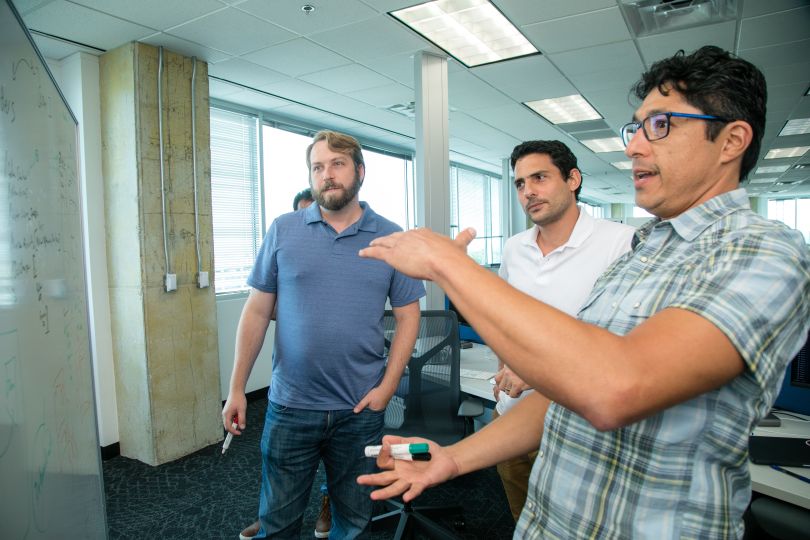Before Gagan Singh joined Ascension as chief data officer in 2019, the technology industry veteran held a perception of healthcare as a slow-moving industry on the technology front.
His perspective changed, though. After a couple of years spent as Ascension’s CDO, Singh said that the Covid-19 pandemic underscored the company’s ability to “adapt and change very rapidly.”
He anticipates plenty of both business and technology transformation ahead, too. Earlier this year, Ascension named Singh chief information officer, a role in which he oversees a wide swath of teams and operations, such as infrastructure engineering, clinical and enterprise applications and platforms, cyber and information security, software engineering, clinical products innovation, data delivery and governance, and medical and nursing informatics. And he’s looking to build from the foundation laid as CDO to tap into the potential he sees in the organization’s technology operations.
“We have the capabilities to help enable Ascension’s digital transformation and provide a resilient IT infrastructure so that our clinicians can provide the best care for our patients and serve Ascension’s mission, which is focused on providing service to all persons, with special attention to those who are poor and vulnerable,” Singh said.
Although his team is united by the theme of ongoing digital transformation, there are a few core priorities that are front and center for Singh, like building a unified experience for patients through a new mobile app as well as enabling a stronger clinician experience.
All of those items are key, but particularly important to Singh is building a data-literate culture at Ascension.
“We believe it’s the responsibility of each and every person — not just senior leaders — to be able to read, work with, analyze and communicate with data. Data-literate people make better decisions,” he said.
But while it might be incumbent upon everyone to deepen that domain expertise, Singh stressed that doing so starts from the top: leadership must have an intentional approach and a clear, complementary framework for creating that culture.
“There is a lot of transformation happening in healthcare, and we must ensure the right digital tools are in place to support our patients’ experience, to support the experience of consumers looking for care and to support our clinicians’ experience — data is the fuel enabling all of them,” Singh said. “Analytics- and data-driven capabilities are going to make the difference and enable the transformation.”
And, at the end of the day, that transformation is in pursuit of one thing: better health.
“Data plays such a critical role driving insights that can help our providers make decisions about patient care. It ignites the fire inside me to make Ascension’s mission really stand out by prioritizing and supporting the needs of our patients and the communities we’re privileged to serve,” Singh said.
In an interview with Built In, Singh outlined his vision for the role, the why and how behind ramping up data literacy efforts and the industry trends he’s big on moving forward.
Ascension's Aim
What’s your long-term vision as CIO?
Over the last three years, Ascension has built out its analytics capabilities and a data ecosystem in the cloud, and we now are able to make data-driven decisions at a very rapid pace leveraging our cloud platform.
To me, that’s where the CIO role comes in and that’s where IT’s future direction is: Aligning closely with the broader organization, knowing where the healthcare industry is moving, making sure we help accelerate the transformation and having the right talent in place.

What are the benefits of embracing the cloud?
The key word is digital. Cloud is just the technology — the platform to enable the digital transformation. We are focusing on providing what we call a seamless experience for our clinicians: Enabling them to see a patient’s holistic medical records to help them quickly understand not just the health issue the patient is experiencing but also the history of care that has led the patient to that moment.
Also, we’re building a completely new digital experience with a mobile-first approach for our patients. They will be able to get a comprehensive view of their entire interaction with our health system, such as their appointments, clinical data, vitals, test reports from different labs, connections with care teams and simplified billing and payment capabilities.
“We’re building a completely new digital experience with a mobile-first approach for our patients.”
What role do you play in developing a data-literate organization?
To improve data literacy, we really need to be intentional, clear and have buy-in from the organization. The number one part of that is business engagement. It is not an IT-exclusive problem. Different business functions understand their own individual domains. When it comes to driving insights or making data-driven decisions, we need data from different aspects of the business. Technology plays a critical role to capture the data, but the real insight comes from bringing the business leaders together and making those decisions.
Secondly, you need to have a common language. Establishing a common vernacular is very important to establishing a data culture. Business terms and key performance indicators often have different interpretations and different meanings. We need to have a common language for everyone to understand the same way.
The third component is an operating model: We need an accountability framework to ensure appropriate definition of the data, evaluation of the data, creation of the data, storage of the data, archival of the data — to ensure the entire data lifecycle happens. These are not just IT rules, but the entire operating model of the business leaders, business subject matter experts, data stewards and the technology subject matter experts that come together in that operating model. Then, we need a data dictionary to capture all of these common vocabularies, reconcile the disparate terms and capture the agreed-upon terms, which facilitate the transparency and factual decision-making around that.
It’s critical that we establish a very dedicated focus on data governance to bring these foundational aspects together; to bring our business leaders and business subject matter experts together, unifying our language, enabling insight generation at scale and leveraging our data in the new ways to serve through digital channels and emerging models of care.

How does that positively impact the individuals you serve?
We want to make sure we provide our clinicians with a better longitudinal health history of the patient. Then we can help providers with proactively managing their care for patients — like helping them get scheduled for preventive screenings.
“We want to make sure we provide a better longitudinal view of the patient.”
That's where we see the value of the data: It helps hospitals and physicians better understand our patients, and our patients can manage their own health better if we provide them the capabilities.
What industry trends are you watching that you’re looking to incorporate into your work at Ascension?
Something we have seen outside of healthcare is a greater emphasis on the customer’s digital experience — things like expectations for easy-to-use apps, an organization knowing me when I come back to them and connecting the physical and the digital channels together. These approaches can all be applied to the healthcare industry.
We see the retail, hospitality and insurance industries solving the needs of those clients or customers better, and we are investing in that customer relationship management technology in the healthcare space, as well, so that we provide a seamless experience for our patients and our clinicians.
From a platform perspective, the cloud is here to stay. We are looking at a transformation of our associates’ experience — including HR, supply chain, finance and payroll aspects — to make sure we provide a very clean and simple experience to our associates. Those are the things that we are looking at changing and transforming in the healthcare industry now.






